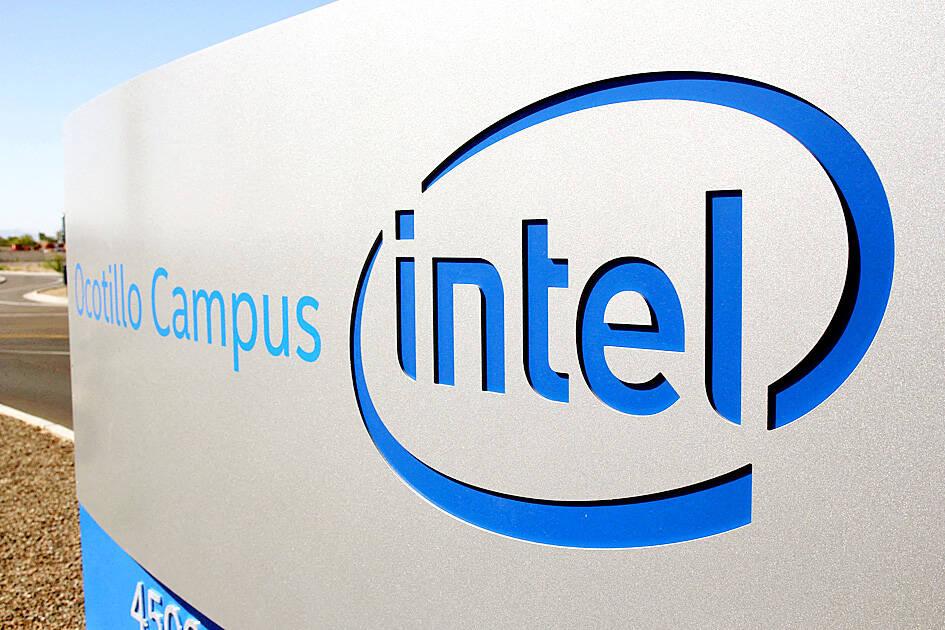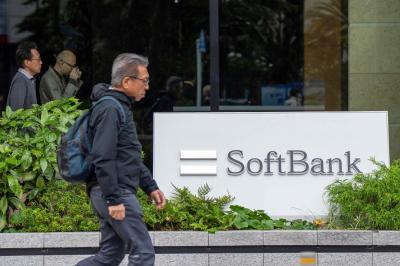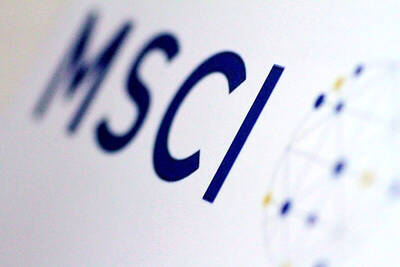Intel Corp has agreed to sell a 51 percent stake in its programmable chips unit Altera to Silver Lake Management LLC, making good on plans to start spinning off non-core assets.
The transaction values Altera at US$8.75 billion, according to a statement yesterday, about half what Intel paid for it a decade ago.
Intel will continue to hold a 49 percent stake in the business. The deal is expected to close in the second half of this year.

Photo: REUTERS
Altera will be run by Raghib Hussain, replacing Sandra Rivera as chief executive officer. Hussain will join from Marvell Technology Inc, where he is president of products and technologies.
“Today’s announcement reflects our commitment to sharpening our focus, lowering our expense structure and strengthening our balance sheet,” Intel CEO Lip-Bu Tan (陳立武) said.
“This investment represents a once-in-a-generation opportunity to invest in a scale leader in advanced semiconductors,” said Kenneth Hao (郝也康), chairman and managing partner of Silver Lake, who added that under new leadership Altera will be focused on investing in “emerging AI-driven markets such as edge computing and robotics.”
Shares of Intel rose as much as 4.3 percent after markets opened in New York.
Intel agreed in 2015 to pay US$16.7 billion for Altera, whose multiuse chips are primarily deployed in telecommunications networks. Last year, the US chipmaker said it would look to sell a stake in Altera — part of a broader plan to turn its business around.
Intel has lost market share to rivals in recent years and missed the shift to artificial intelligence accelerators, a market now dominated by Nvidia Corp. Intel’s board ousted chief executive officer Pat Gelsinger last year after his comeback plan was slow to gain momentum.
Tan, who recently stepped into the role of CEO, said about two weeks ago that the chipmaker will spin off assets that aren’t central to its mission, and create new products including custom semiconductors to try to better align itself with customers.
Intel needs to replace the engineering talent it has lost, improve its balance sheet and better attune manufacturing processes to meet the needs of potential customers, Tan told attendees at a company conference. He didn’t specify which parts of Intel were no longer key to its future.

PERSISTENT RUMORS: Nvidia’s CEO said the firm is not in talks to sell AI chips to China, but he would welcome a change in US policy barring the activity Nvidia Corp CEO Jensen Huang (黃仁勳) said his company is not in discussions to sell its Blackwell artificial intelligence (AI) chips to Chinese firms, waving off speculation it is trying to engineer a return to the world’s largest semiconductor market. Huang, who arrived in Taiwan yesterday ahead of meetings with longtime partner Taiwan Semiconductor Manufacturing Co (TSMC, 台積電), took the opportunity to clarify recent comments about the US-China AI race. The Nvidia head caused a stir in an interview this week with the Financial Times, in which he was quoted as saying “China will win” the AI race. Huang yesterday said

Japanese technology giant Softbank Group Corp said Tuesday it has sold its stake in Nvidia Corp, raising US$5.8 billion to pour into other investments. It also reported its profit nearly tripled in the first half of this fiscal year from a year earlier. Tokyo-based Softbank said it sold the stake in Silicon Vally-based Nvidia last month, a move that reflects its shift in focus to OpenAI, owner of the artificial intelligence (AI) chatbot ChatGPT. Softbank reported its profit in the April-to-September period soared to about 2.5 trillion yen (about US$13 billion). Its sales for the six month period rose 7.7 percent year-on-year

MORE WEIGHT: The national weighting was raised in one index while holding steady in two others, while several companies rose or fell in prominence MSCI Inc, a global index provider, has raised Taiwan’s weighting in one of its major indices and left the country’s weighting unchanged in two other indices after a regular index review. In a statement released on Thursday, MSCI said it has upgraded Taiwan’s weighting in the MSCI All-Country World Index by 0.02 percentage points to 2.25 percent, while maintaining the weighting in the MSCI Emerging Markets Index, the most closely watched by foreign institutional investors, at 20.46 percent. Additionally, the index provider has left Taiwan’s weighting in the MSCI All-Country Asia ex-Japan Index unchanged at 23.15 percent. The latest index adjustments are to

CRESTING WAVE: Companies are still buying in, but the shivers in the market could be the first signs that the AI wave has peaked and the collapse is upon the world Taiwan Semiconductor Manufacturing Co (TSMC, 台積電) yesterday reported a new monthly record of NT$367.47 billion (US$11.85 billion) in consolidated sales for last month thanks to global demand for artificial intelligence (AI) applications. Last month’s figure represented 16.9 percent annual growth, the slowest pace since February last year. On a monthly basis, sales rose 11 percent. Cumulative sales in the first 10 months of the year grew 33.8 percent year-on-year to NT$3.13 trillion, a record for the same period in the company’s history. However, the slowing growth in monthly sales last month highlights uncertainty over the sustainability of the AI boom even as